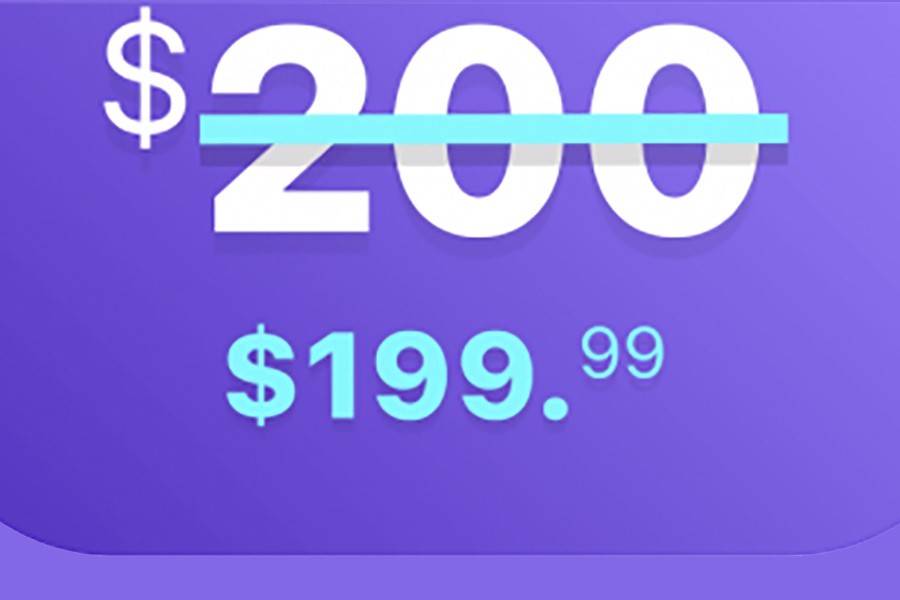Pricing is a critical aspect of any business strategy, directly impacting sales, customer perception, and overall profitability. One of the most widely used pricing techniques is Charm Prices. This strategy involves setting prices just below a round number, such as $9.99 instead of $10.00. While the difference may seem minimal, the psychological impact on consumers is significant. Understanding this pricing strategy and how it influences buying behavior is essential. Especially for businesses looking to optimize their pricing strategies and maximize sales.
What Are Charm Prices?
Charm Prices, also known as psychological pricing, refer to the practice of pricing products or services just below a whole number. Examples of this practice are $19.99, $49.95, and $99.90. The assumption is that consumers perceive prices ending in .99 or .95 as being significantly lower than they actually are. This perception can lead to increased sales. The reason for this is that customers are more likely to view these prices as bargains compared to round numbers.
For example, consumers may perceive a product priced at $9.99 as closer to $9 than $10, even though the difference is only one cent. This subtle shift in perception can make the price more appealing to consumers, encouraging them to make a purchase. Charm Prices have been a popular pricing strategy for decades. Businesses across various industries, from retail and e-commerce to hospitality and services, use them.
The Psychology Behind Charm Prices
Consumer psychology and how people process numbers root the effectiveness of Charm Prices. One of the key psychological principles at play is the left-digit effect. When consumers see a price like $9.99, they tend to focus on the left-most digit. In this case, the “9,” rather than the digits after the decimal point. This focus causes consumers to perceive the price as being closer to $9 rather than $10. This makes it seem like a better deal.
Another psychological factor that influences the effectiveness of Charm Prices is the concept of price perception. Consumers often associate prices ending in .99 or .95 with discounts or sales. This association can create a sense of urgency or excitement, leading customers to believe they are getting a bargain. As a result, pricing products this way can increase the likelihood of impulse purchases. Consumers may feel they need to act quickly to take advantage of the perceived deal.
Additionally, Charm Prices leverage the psychological principle of perceived value. By pricing products just below a round number, businesses can create the illusion of value, making customers feel they are getting more for their money. This perception of value can be particularly powerful in competitive markets, where even small differences in price can influence consumer decisions.
Practical Applications of Charm Prices
Charm Prices are widely used across various industries to drive sales and influence consumer behavior. In retail, Charm Prices are commonly seen in clothing stores, supermarkets, and electronics shops. By pricing items at $29.99 instead of $30.00 or $49.95 instead of $50.00, retailers can create the perception of a lower price, which can encourage customers to make a purchase.
In e-commerce, Charm Prices are often used to increase conversion rates. Online shoppers are highly price-sensitive, and even a small difference in price can impact their decision to buy. E-commerce businesses use Charm Prices to make their products appear more affordable and competitive, thereby increasing the likelihood of completing a sale.
The hospitality industry also employs this type of pricing psychology to influence consumer behavior. For example, hotels may price rooms at $199.99 per night instead of $200.00 to make the rate appear more attractive. Similarly, restaurants may price menu items at $9.95 instead of $10.00 to encourage diners to order more.
Charm Prices are not limited to product pricing; they can also be applied to services. For example, a gym may offer a monthly membership for $29.95 instead of $30.00 to make the membership fee seem more affordable. This strategy can be particularly effective in competitive markets where consumers are comparing prices across multiple service providers.
The Benefits of Using Charm Prices
One of the primary benefits of using Charm Prices is their ability to increase sales. By making prices appear lower than they actually are, businesses can attract more customers and encourage them to make purchases. This increase in sales can lead to higher revenues and improved profitability.
Another benefit of pricing products like this is their impact on customer perception. By using Charm Prices, businesses can create the impression of offering better value, which can enhance customer satisfaction and loyalty. When customers feel they are getting a good deal, they are more likely to return for future purchases and recommend the business to others.
Charm Prices can also help businesses differentiate themselves from competitors. In markets where price competition is fierce, using price psychology can give a business a slight edge, making their products or services appear more attractive than those of competitors. This competitive advantage can be particularly valuable in industries where customers are highly price-sensitive.
Moreover, Charm Prices can influence consumer behavior in subtle but powerful ways. For example, research has shown that prices ending in .99 are more likely to be remembered by consumers, which can increase brand recall and drive repeat purchases. This psychological impact can be a significant advantage for businesses looking to build long-term customer relationships.
Potential Drawbacks and Considerations
While Charm Prices can be highly effective, they are not without potential drawbacks. One concern is that overuse of these prices can lead to consumer skepticism. If customers perceive that a business is consistently using Charm Prices to create the illusion of value, they may become wary and less likely to trust the business’s pricing practices.
Additionally, Charm Prices may not be suitable for all products or markets. For premium or luxury goods, Charm Prices may detract from the perceived quality or exclusivity of the product. In these cases, round numbers may be more appropriate, as they can convey a sense of stability and confidence.
Another consideration is the potential impact on brand image. While this pricing strategy can be effective in attracting price-sensitive customers, they may not align with the brand image of businesses that position themselves as high-end or exclusive. In these cases, businesses should carefully consider whether Charm Prices are the right fit for their overall brand strategy.
Finally, it is important for businesses to test the effectiveness of alternate pricing before implementing them widely. Consumer behavior can vary based on factors such as market segment, product category, and geographic location. By conducting A/B testing and analyzing sales data, businesses can determine whether Charm Prices are the right strategy for their specific situation.
How to Implement Charm Prices in Your Business
For businesses looking to implement Charm Prices, it is important to start by understanding your target audience and their price sensitivity. Conduct market research to identify the pricing preferences of your customers and use this information to develop a pricing strategy that resonates with them.
When setting prices, ensure that the difference between the Charm Price and the round number is small enough to create the desired psychological effect but not so small that it seems insignificant. For example, pricing an item at $9.99 instead of $10.00 creates a more noticeable impact than pricing it at $9.98.
Additionally, consider the context in which the Charm Price will be used. For example, the price of a product may be more effective in discount or promotional settings, where customers are already primed to look for bargains. In contrast, premium settings may require a different pricing strategy that emphasizes quality and exclusivity.
Finally, businesses should regularly monitor the effectiveness of their pricing strategy and make adjustments as needed. Consumer behavior and market conditions can change over time, so it is important to stay flexible and responsive to these changes.
Conclusion
Charm Prices are a powerful pricing strategy that can significantly influence consumer behavior and drive sales. By understanding the psychology behind pricing and implementing it strategically, businesses can create the perception of value, attract more customers, and increase profitability. However, it is important to use pricing thoughtfully and in a way that aligns with your brand image and customer expectations. When used effectively, Charm Prices can be a valuable tool in your pricing arsenal, helping you achieve your business goals and build lasting customer relationships.


